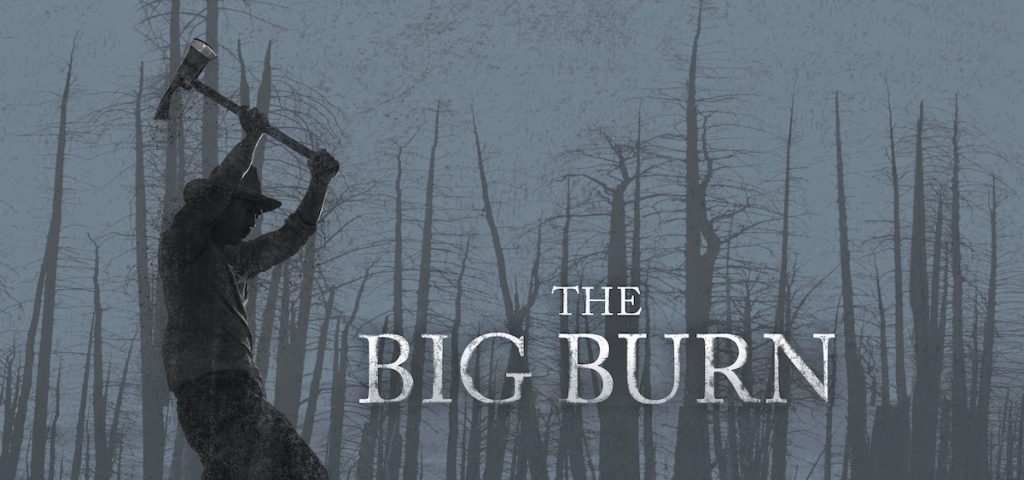Culture
Wayne National Forest’s Dan Anerino lets us know what to do to prevent forest fires in time for WOUB-TV’s broadcast of ‘The Big Burn’
By: Emily Votaw
Posted on:
Throughout the summer of 1910, more than three million acres of land across the Northern Rockies were decimated by hundreds of wildfires. 86 people would lose their lives over the course of the disaster, which would go on to be referred to by several names, including “the Big Blowup” and “The Great Fire of 1910.”
The fire marked the American conscious in ways that no forest fire had done in the past, and out of the fiery cataclysm was born the U.S. Forest Service we know today. Tonight at 10 p.m. ET, WOUB-TV airs “The Big Burn: American Experience,” a documentary that examines the aftermath of the Great Fire of 1910.
WOUB Culture spoke to Wayne National Forest’s Forest Assistant Fire Management Officer Dan Anerino in advance of the broadcast to get a perspective on how the Great Fire of 1910 still impacts how forest fires are handled today.

Dan Anerino: My name’s Dan Anerino and I’m the Wayne National Forest Forest Assistant Fire Management Officer. I assist with operations for fire suppression here in Southeastern Ohio. I’ve been in this position for about seven years. I’ve been fighting wildfires since 1998, which was my first season, and I got on full time with the Forest Service in 2002.
WOUB Culture: How susceptible is our region to forest fires?
Dan Anerino: Throughout the state itself, the majority of our wildfires, although they occur across the state, happen in Southeastern Ohio in about a 17 county area. Ohio itself gets around an average of 800 fires a year. I would venture to say that 99 percent of the fires that we get are caused by humans. Usually it’s debris burning — things of that nature. Just within the 12 county area the Wayne National Forest protects, we work very closely with 48 different fire departments for fire suppression. So it’s a very large cooperative effort and strategic planning involved to mitigate the wildfire risk.
WOUB Culture: On Wednesday, Sept. 10, WOUB is airing the American Experience documentary “The Big Burn.” The historical documentary chronicles the summer of 1910, when hundreds of wildfires raged across the Northern Rockies, which burned more than three million acres of land. In the aftermath of the fire, the U.S. Forest Service received considerable recognition for its firefighting efforts, including a doubling of its budget from Congress. The outcome was to highlight firefighters as public heroes while raising public awareness of national nature conservation. The fire is often considered a significant impetus in the development of early wildfire prevention and suppression strategies. So, from your perspective, what were some of those early wildfire prevention and suppression strategies. And how have they developed into what you do now?
Dan Anerino: Well, it’s interesting. So the Northeastern United States isn’t typically thought of as being prone to wildfires, but, you know, one of the largest wildfires in history was actually in the state of Wisconsin back in 1871 – the Peshtigo fire. About 1200 people lost their lives in that fire, but the fires in 1910 really got people’s attention. They burned in Montana, Idaho, and Washington, around 3 million acres at the time. And there were multiple fires happening in different places. It’s interesting that the Forest Service was developed just five years before that in 1905. And three of the gentlemen that actually fought the fires in 1910 ended up being the chiefs of the Forest Service. But it’s interesting that three of the gentlemen that actually fought the fires in 1910 ended up being Forest Service chiefs who helped drive some of the national suppression policies.
WOUB Culture: What can WOUB listeners and readers do to prevent forest fires?
Dan Anerino: That’s a great question. Really, just be thoughtful when you’re using any kind of ignition source, whether it be fire or a camp stove or a barbecue. Tend to that fire, don’t leave it alone, and check the weather forecast, because obviously weather drives wildfires. So the dryer the weather, the hotter it will burn — the more wind that’s behind it, the faster it will spread. And then of course, when you overlay that with topography, fire runs uphill very quickly. So when you put all those things together, it’s really just a thoughtful process before you light that match — before you burn your yard debris, or start a barbecue. Check the weather forecast, and have the proper equipment there, meaning that you might have a garden hose or a shovel to put out a fire if needed.

